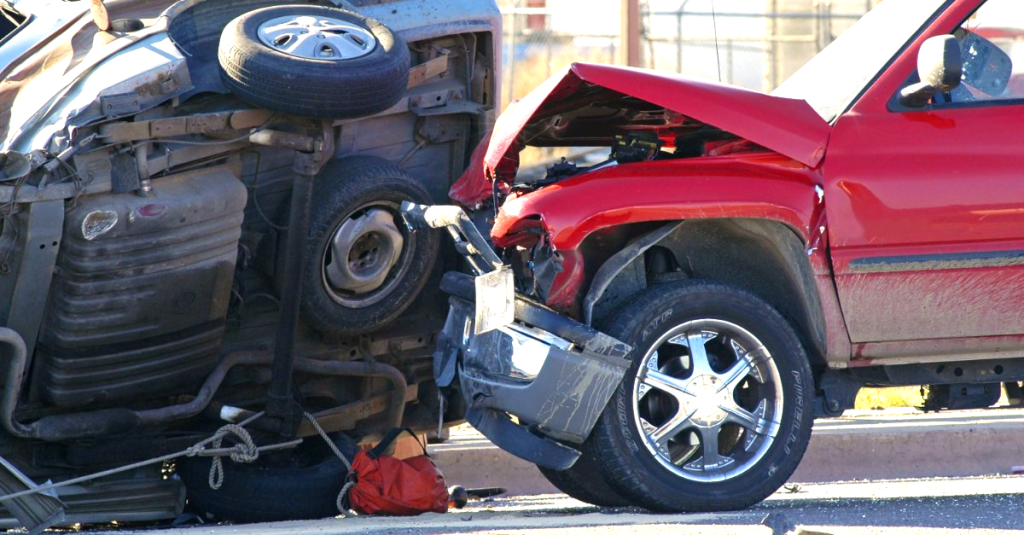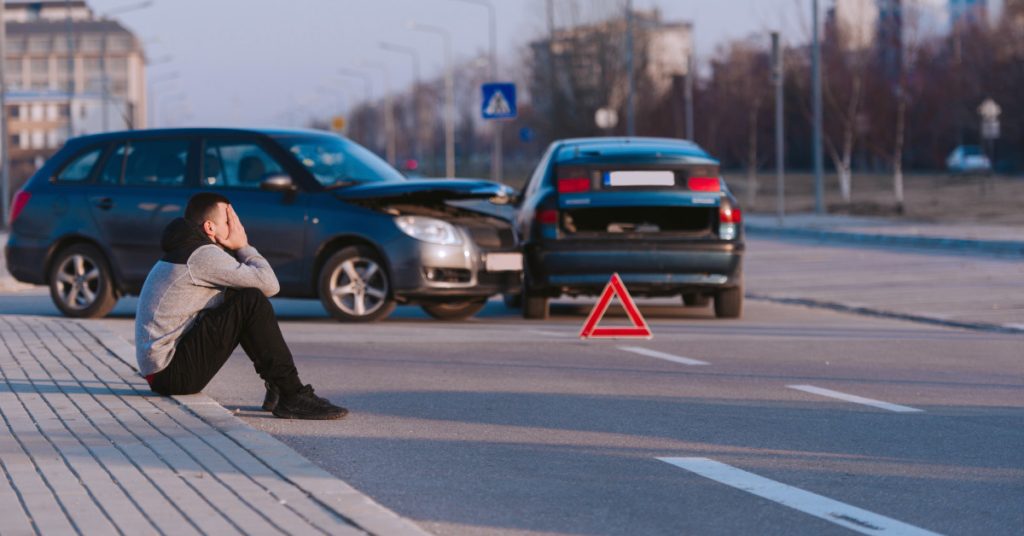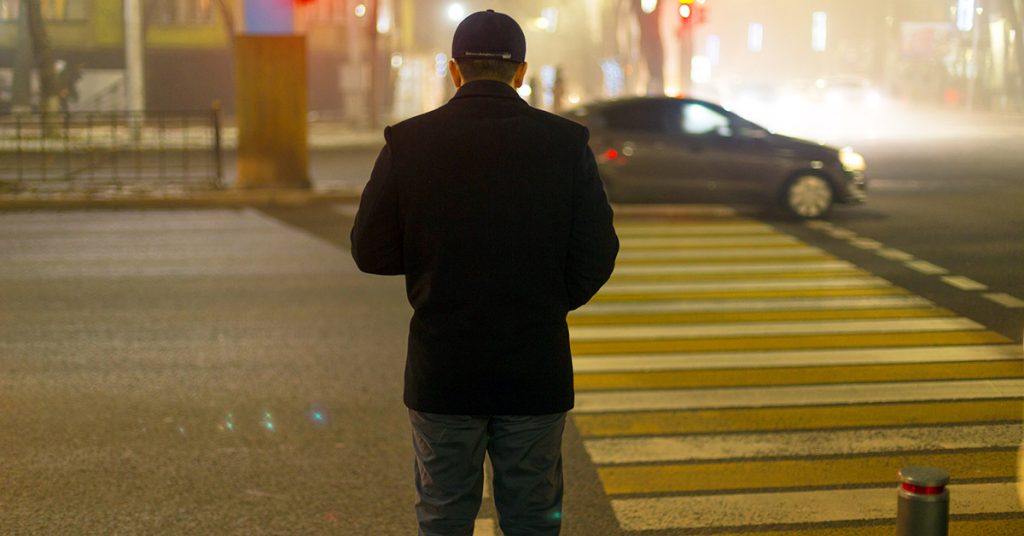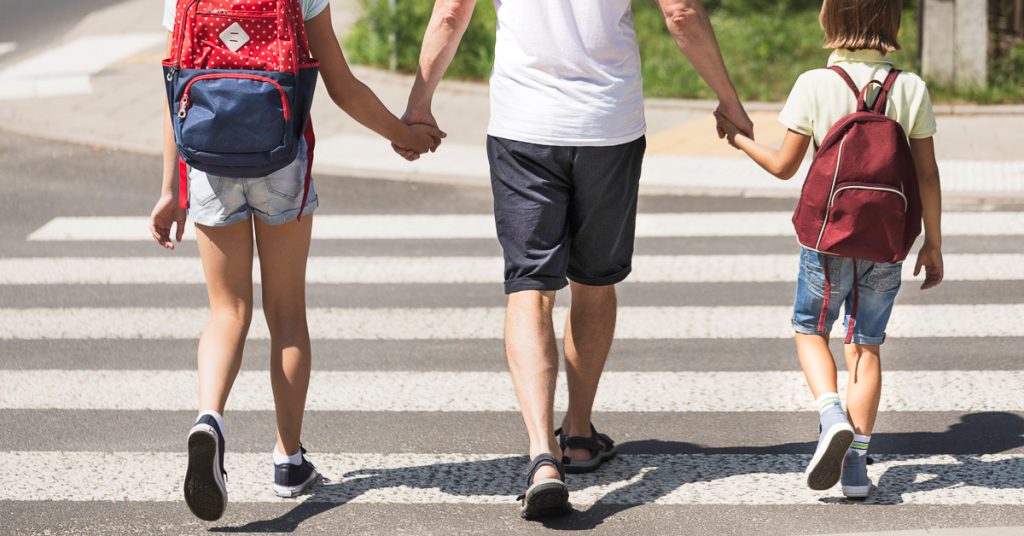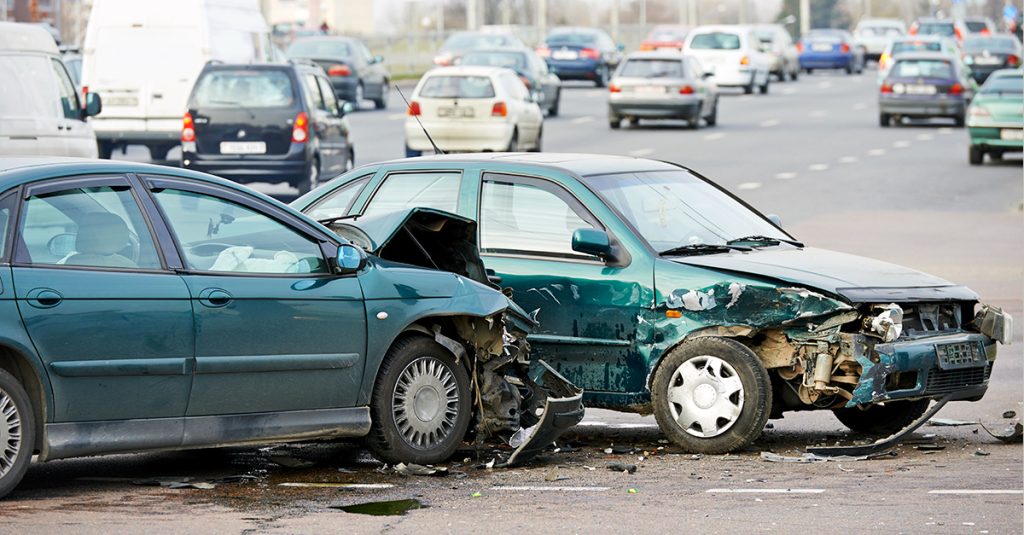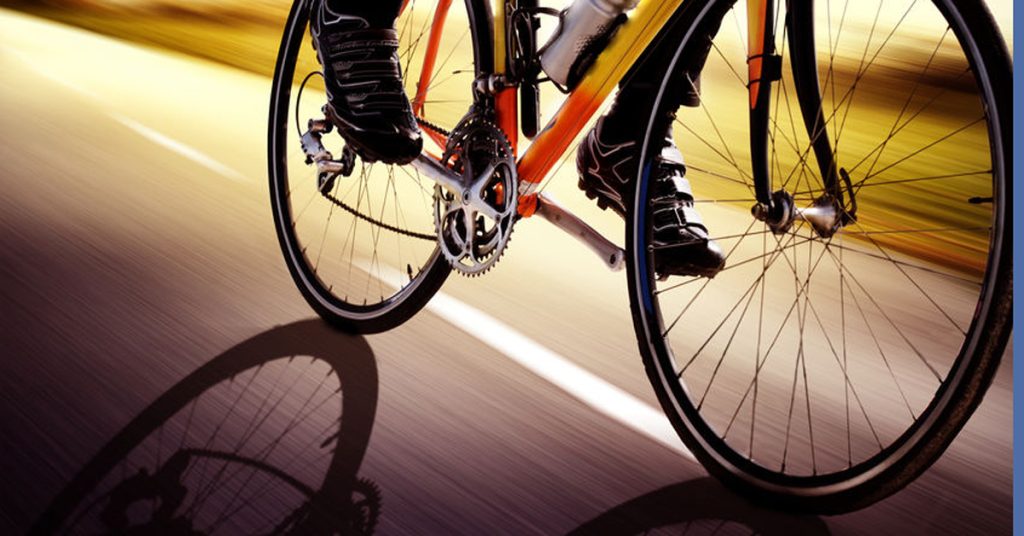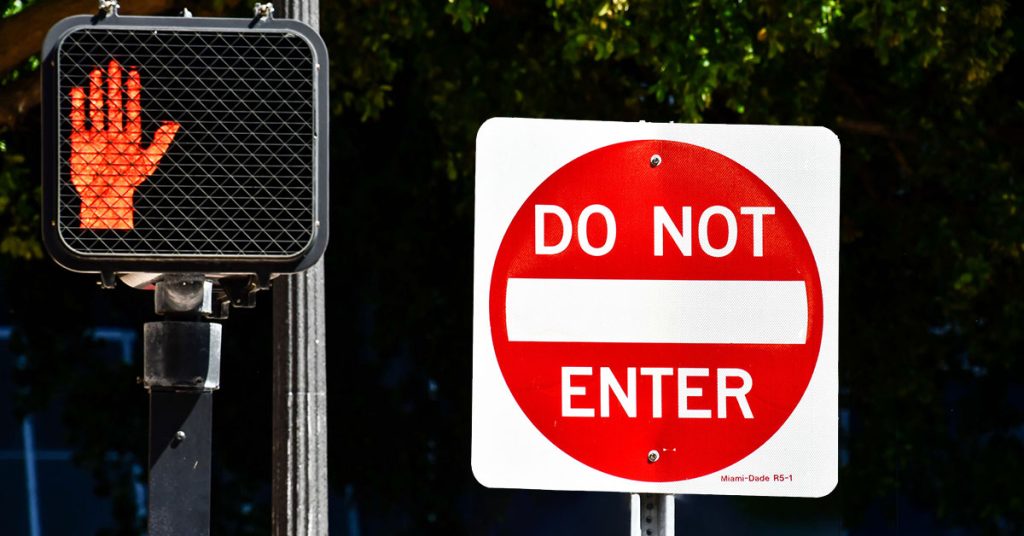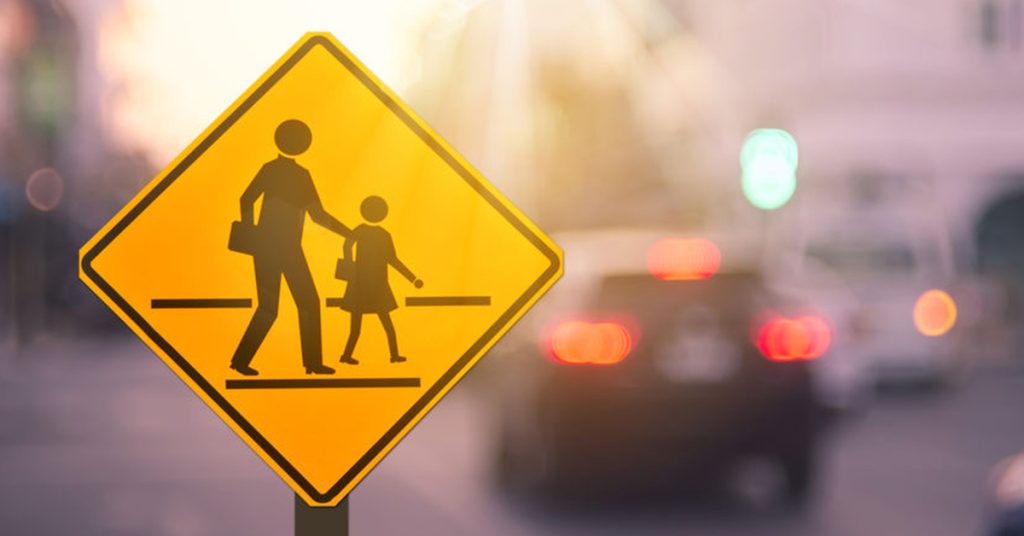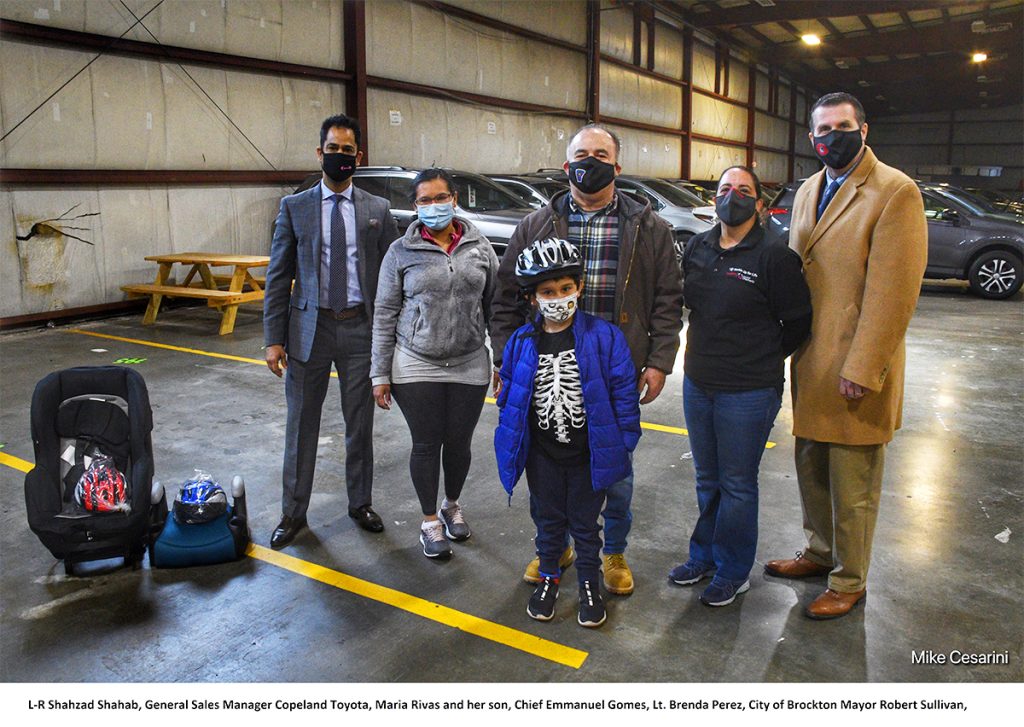Motor Vehicle Accidents
New Safety Campaign Encourages Drivers to Stop Deadly Trend of High-Speed Accidents
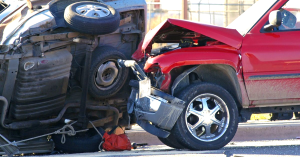
Speed-related crashes claimed 17 more percent more lives during 2020, according to the NHTSA.
Many of us have resumed our routines or transitioned to a new normal after the pandemic. Except in our cars. Early in the pandemic, drivers began a dangerous trend of driving less and speeding more into open roads, resulting in very serious crashes and injuries.
This past summer, the National Highway Traffic Safety Administration (NHTSA) announced a new public outreach campaign to address the growing danger of speed-related accidents.
In this blog, we share a few statistics from the NHTSA’s “Speeding Wrecks Lives” campaign to encourage awareness about the consequences of speeding here in Massachusetts.
The impact of speeding during the pandemic:
- More than 11,000 people were killed by speeding crashes in 2020, a 17 percent increase from 2019.
- Overall, speeding caused 29 percent of all traffic deaths in 2020.
- Younger drivers age 18-44 were behind the wheel in 25 percent of fatal speed-related crashes.
- Younger male drivers between the ages of 15 and 24 were involved in many of these crashes.
Another critical benchmark involves young children. The Governors Highway Safety Association reports speed-related deaths of pedestrians younger than 15 more than doubled between 2018 and 2020.
In June, the State House News Service reported that Massachusetts reached an 11-year high in traffic deaths during 2021. In the article, a Massachusetts DOT board member specifically mentioned the impact of speeding as well as aggressive driving since the pandemic began.
Fatal Pedestrian Crashes Are More Likely At Higher Speeds
The Federal Highway Administration has long stressed the importance of managing speeds on the roads, citing data from the AAA Foundation for Traffic Safety. The data shows pedestrians have a much higher chance of survival when hit in car crashes at lower speeds.
When a pedestrian is hit by a car traveling 23 mph, they have a 10 percent chance of death, compared to a 50 percent chance of death when a car is traveling 42 mph. Pedestrians are 90 percent more likely to die when hit by a car traveling 58 mph.
Why Speeding is So Dangerous
With this new campaign, the NHTSA continues to educate the public on the specific hazards of high-speed accidents.
Drivers who speed are more likely to lose control of their steering. Even when the driver sees a pedestrian or identifies a potential traffic hazard, they may not have time to stop or change lanes in time if they are speeding. Drivers have more control when they travel at lower speeds and really take time to look for pedestrians and cyclists. When a driver looks, this naturally slows them down and raises their awareness of road conditions. With more pedestrians and cyclists out than ever, drivers should really look, whether they are traveling through downtown areas, school zones or quiet back roads.
When drivers disregard the speed limit, they may also let their guard down in other ways. Speeding can be a springboard for drivers to engage in aggressive driving and road rage.
Free Legal Consultation – Boston Auto Accident Lawyers
With more than 125 years combined experience, Breakstone, White & Gluck has extensive experience representing those injured in car accidents, pedestrian crashes and bicycle collisions in Massachusetts. We provide experienced and aggressive representation throughout all stages of motor vehicle accident claims, from investigation to trial and appeal if necessary.
If you have been injured by negligent driving, contact our lawyers for a free legal consultation at 800-379-1244 or 617-723-7676 or use our contact form.
U.S. Traffic Deaths Reached a 16-Year High in 2021, Early Estimates Show
 Traffic fatalities rose dramatically last year as we worked to emerge from COVID-19. The National Highway Traffic Safety Administration (NHTSA) has released early estimates showing 42,915 people died in motor vehicle crashes in 2021, up 10.5 percent from 2020. In Massachusetts, early estimates show a 20 percent increase.
Traffic fatalities rose dramatically last year as we worked to emerge from COVID-19. The National Highway Traffic Safety Administration (NHTSA) has released early estimates showing 42,915 people died in motor vehicle crashes in 2021, up 10.5 percent from 2020. In Massachusetts, early estimates show a 20 percent increase.
There were more vehicles on the road last year. The NHTSA reported an 11 percent increase in vehicle miles traveled in 2021 compared to 2020. There was only a slight decline in the fatality rate per mile traveled.
But the projection shows the highest number of traffic fatalities since 2005 – and the largest annual increase in traffic deaths since 1975, when the federal traffic data system began. Across the board, drivers, pedestrians, bicyclists and motorcyclists all faced more treacherous conditions than before the pandemic, even as many traveled less.
Rise in Pedestrian and Bicycle Fatalities
Many of us have been walking more since the pandemic began. It’s nice to just step outside and start getting some exercise. However, the walk can be very dangerous. Traffic may look lighter at times. Open roads seem to encourage drivers to speed and traffic patterns are still highly irregular.
Nationwide, pedestrian traffic deaths increased 13 percent in 2021, while fatal bicycle accidents climbed 5 percent. There was also a 9 percent increase in motorcycle accident fatalities.
Speed-Related Crashes Up 5 Percent
The NHTSA reports a 5 percent rise in traffic fatalities caused by speed-related crashes in 2021. This follows a dangerous 17 percent jump from 2019 to 2020. Overall, speeding is responsible for more fatal crashes now than before the pandemic.
There were also more fatalities in multi-vehicle crashes last year, as vehicles traveled more miles. These fatalities climbed 16 percent in 2021. There was a rise from March to August 2021, then November to December. April 2021 saw the greatest increase in fatalities in multi-vehicle crashes.
Alcohol-Related Crashes Rise
One of the most troubling trends of the pandemic was the rise in drunk driving and injuries. In 2020, there was a 16 percent rise in traffic fatalities stemming from police-reported, alcohol-involvement crashes. This came as workers and students stayed home. In 2021, this trend continued, with an estimated 5 percent increase in these crashes.
More Traffic Deaths Among Seniors
There were fewer traffic fatalities among older Americans in 2020 as more people stayed home or suffered from COVID-19. But last year, as senior citizens (those 65 and older) got back out, there was a 14 percent increase among traffic fatalities.
13 Percent Increase in Traffic Fatalities Involving at Least One Large Truck
In 2021, there was a 13 percent increase in fatalities in crashes involving at least one large truck (one with a gross vehicle weight rating of more than 10,000 lbs). The NHTSA counts both commercial and non-commercial vehicles.
Trucking activity has drastically changed since the start of the pandemic. More of us are ordering groceries, clothing and household supplies from the convenience of our homes and we may see large trucks and delivery vans several times a day.
The NHTSA reports traffic fatalities in crashes involving at least one large truck increased from April to July 2021 and then again from November to December 2021.
Free Legal Consultation – Boston Car Accident Lawyers
Founded in 1992, Breakstone, White & Gluck has been consistently recognized for our results for our clients. Our personal injury attorneys provide experienced and aggressive representation to those injured in car accidents, pedestrian accidents and motorcycle crashes across Massachusetts.
If you or a loved one have been injured by another driver’s negligence, learn your legal rights for seeking compensation for your recovery. For a free legal consultation, contact Breakstone, White & Gluck and at 800-379-1244 or 617-723-7676 or use our contact form.
As the Days Get Shorter, Make Pedestrian Safety a Priority in Massachusetts
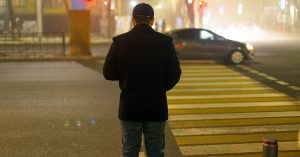
As the days get shorter, drivers must watch for pedestrians. The number of pedestrian fatalities has risen in Massachusetts during 2021.
The majority of all pedestrian fatalities occur at night or in dark light conditions, according to the National Highway Traffic Safety Administration (NHTSA). This is a significant point come October in Massachusetts, when the days get shorter and the walk home becomes darker.
As a driver, renew your commitment to travel safely near pedestrians this Fall. This is critical. In addition to shorter days, Massachusetts is seeing a rise in pedestrian fatalities as traffic volumes start to rebound. In August, the Massachusetts Department of Transportation (MassDOT) reported traffic volumes had returned to just 5 percent below pre-pandemic levels in 2019.
As of October 21, 2021, 58 pedestrians have died on Massachusetts roads this year, according to MassDOT crash data. 55 pedestrian fatalities were recorded in 2020, when traffic was lightest due to Covid 19 stay at home policies. Prior to the pandemic, there were 78 fatal pedestrian injuries statewide in 2019.
There have been 1,086 total pedestrian accidents reported in 2021 so far, including those involving fatal injuries, non-fatal injuries and property damage without injury, compared to 1,443 pedestrian crashes in 2020 and 2,198 pre-pandemic in 2019. (Source: MassDOT, 2017-2021 Pedestrian, Cyclist and Motorcyclist Crashes by Injury).
While helpful, the data is just a snapshot. A better resource: ask anyone who walks if driving patterns are still irregular due to the pandemic. Roads may be less congested, but drivers are picking up speeds at times. This endangers pedestrians, especially at night, when there is less visibility.
Reminders for Driving Safely Near Pedestrians and Reducing the Risk of Injury
Drive Slowly and Watch for Pedestrians
Drive slowly and always look for pedestrians. Take an extra moment to look in all directions before you step on the gas. Pedestrians are more likely to blend in at night, even in well-lit areas.
Yield and Stop at Crosswalks
Drivers have a responsibility to yield to pedestrians before turning at traffic signals and to stop or yield for pedestrians to safely walk through crosswalks. Many pedestrian accidents at night occur in intersections and crosswalks.
Once you start moving, you can attempt to break quickly but you really have less control, especially in short distance situations, such as when turning at an intersection or backing out of a parking space. Take a moment and take a good look for pedestrians first.
Give Yourself More Time When Getting in Your Car
Drivers can reduce their risk of hitting a pedestrian by giving their full attention to the road. To do this, give yourself time to get ready for the ride while you are parked: buckle your child up and set up your cell phone in hands-free mode if you plan to use it. Make sure you have directions typed into your GPS or you know where you are going.
When you are finished, then give yourself time to turn on the vehicle and look for pedestrians.
Drive at Night Without Distractions
The state of Massachusetts now allows drivers to use cell phones in hands-free mode, but this can be a dangerous distraction when driving at night. The best policy is to pull over in a legal parking space if you need to call someone and avoid causing a car accident or truck crash, resulting in pedestrian injuries.
Reduce Your Speed
During the day and at night, you give yourself more time to stop for pedestrians when you travel at the speed limit or below if necessary for safety conditions.
Look for Both Pedestrians and Cyclists
Pedestrians may or may not wear bright clothing, so you have to really check when you drive at night or in the early morning. Pedestrians may be hard to see, even when traveling through a well-lit intersection or parking lot.
Cyclists may be easier to see as they approach. In Massachusetts, cyclists must use a white headlight and red taillight or rear reflector at night, or specifically from ½ hour after sunset until ½ hour before sunrise under M.G.L. c. 85, § 11B.
This means you may see a white light when a cyclist is approaching and red light (or reflector) from behind. You may also see reflective material on a cyclist’s pedals.
Consider the Impact of Darkness on Drivers
It is simply harder to see at night. Not just for senior citizens. Age-related vision changes can pay a toll much earlier than retirement age. For instance, a 50-year-old driver may need twice as much light to see as well as a 30-year-old, according to the National Safety Council. It is critical for all drivers to schedule an annual eye exam, get proper rest and set aside distractions.
Older Drivers
Still, older drivers may struggle the most when driving at night. At 60 or older, drivers may not see as well at night and may suffer from a loss in color and depth perception, making it harder to judge speeds and distances, according to the American Optometric Association.
Safety precautions for older drivers traveling at night:
- Have an annual eye examination.
- Consider taking a driving class to brush up on your driving skills and learn about age-related vision changes. The AARP offers courses and other organizations may also.
- Limit or avoid driving at night.
- Reduce your speed and expect pedestrians.
- Be cautious at intersections, taking extra care to yield to pedestrians.
Limit Teen Driving at Night
As a parent, let your teen drive during the day, but consider limiting their driving hours at night this Fall. Teens are still learning and driving safely at night takes practice. And right now, traffic is even less predictable and your teens may be driving alongside more trucks and delivery vans as we approach the holidays.
This is a suggestion. But remember under the Massachusetts Junior Operator Law, teens are not permitted to drive at all between 12 a.m. and 5 a.m.
Free Legal Consultation – Boston Pedestrian Accident Attorneys
Breakstone, White & Gluck is a top-rated Boston personal injury law firm. With more than 100 years combined experience, our attorneys provide thorough and aggressive representation to those injured by negligence across Massachusetts, including in Boston, Cambridge, Winthrop, Arlington, Somerville, Everett and Chelsea. We also serve clients across the state, including in Quincy and the South Shore, Hyannis, Barnstable and Cape Cod, Framingham, Worcester and the Danvers and the North Shore.
Our firm specializes in representing pedestrians and cyclists who have been injured in auto accidents, truck accidents and bus crashes, including MBTA bus accidents in the city of Boston.
For a free legal consultation, contact our firm at 800-379-1244 or 617-723-7676 or use our contact form.
Back-to-School Safety Reminders for Massachusetts Drivers

As students head back to school in Massachusetts, drivers are urged to travel safely and follow speed limits.
Back-to-school is a fun and exciting time for students, especially getting to reconnect with friends after summer vacation. As students get ready, drivers should too. You should expect to see more students walking, biking or waiting at school bus stops. Commit to drive safely and be mindful of speed limits.
Take a Test Drive
Before students return, drive through your community, school parking lots and nearby intersections. Observe whether there has been roadwork or if new bike lanes have been added. Look for new traffic signs related to parking, school drop-offs and traffic direction. Look for sidewalks. As a driver, you have to make quick decisions and this check will help you later.
Look Right, Left, Front, Back
Drivers can prevent many traffic accidents by checking their blindspots and all sides of their vehicles at intersections more. At red lights and stop signs, it is critical that you check, especially from behind. You must watch for pedestrians, but also cyclists. Consider that after you initially stop your car, a cyclist could approach from behind. If you neglect to check, you may not see them before the encounter turns into a very serious bicycle accident.
When you park, commit to look. Check all sides, including your blindspot. Use your back-up cameras and really look for pedestrians, whether you are in a school parking lot or at a local restaurant or other business. Before you step out of your vehicle, check again so you do not hit a cyclist or pedestrian with your door. These accidents can happy very suddenly if you do neglect to look and a cyclist is nearby. Learn more about dooring accidents.
Slow Down for Students
In Massachusetts, drivers must follow a 20 mph speed limit in school zones. The Vision Zero campaign has documented that slower is safer for pedestrians, even just 5 mph.
From the City of Boston’s Vision Zero campaign:
- There is a 17 percent likelihood of fatality or severe injury when drivers travel 20 mph and hit a pedestrian.
- At 25 mph, the risk of pedestrian death or severe injury rises to 30 percent.
- At 30 mph – still not that fast – there was a 47 percent chance of a pedestrian accident turning fatal.
Travel Safely Behind School Buses
After the past year, it is more important than ever to practice patience near school buses and school bus stops. Each day may be different as parents, children and school bus drivers try to manage under COVID-19 conditions. Remember the basics of school bus safety.
When a bus flashes its yellow signals, this means the driver is getting ready to stop. Other drivers on the road should slow down and prepare to stop. Drivers must stop when the school bus activates its red lights and extends its stop sign.
Never pass a school bus that has activated its signals and extended its stop sign. In Massachusetts, drivers must keep vehicles at least 100 feet behind a school bus at all times. M.G.L. c. 90, § 14
When a school bus stops, drivers traveling in both directions must stop. And if you end up stopping behind a school bus that is letting off children, just wait. Wait until all the children have fully stepped onto the sidewalk and give the bus distance when it starts moving again. This also gives you time to assess the traffic and look for an opportunity to get off the bus route if you want to.
Stop and Look for Pedestrians at Crosswalks and Intersections
Drivers should commit to stop for students in crosswalks. Students expect drivers to stop and if drivers travel slowly and are prepared to stop, they have extra time to make safe decisions near children.
In Massachusetts, drivers have a responsibility to yield, slow down or stop for all pedestrians in marked crosswalks. Drivers must stop for pedestrians at crosswalks with an activated “Walk” signal. Another point is that you should follow other drivers and their decisions near crosswalks. When the car in front of you stops for a pedestrian at a marked crosswalk, you have a duty to stop and wait for the pedestrian to cross.
Read more on Breakstone, White & Gluck’s page on pedestrian crosswalk laws.
Teens Suffer Many Pedestrian Injuries
When you hear “back-to-school safety,” many people think of young elementary school students. But in “Alarming Dangers in School Zones, 2016,” SafeKids Worldwide reports that older teens, ages 15-19, account for 26 percent of all children age 19 and younger. Yet the older teens accounted for about half of all pedestrian fatalities, with many occurring at night.
This is relevant because when school begins, there will be a rise in traffic and pedestrian activity even outside school hours. High school students may be participating in afterschool sports, extracurricular activities, an afterschool job or visiting more with friends.
Call 911 to Report Injuries to Children, Pedestrians and Cyclists
If you pass a student or an older pedestrian or cyclist who has been injured, stop and call 911. This is a really difficult time as the pandemic continues and there is likely to be traffic congestion at times and demands on our emergency response services.
Never assume a pedestrian has help. Nearly 20 percent of all pedestrian fatalities involve hit-and-run crashes, according to the AAA Foundation for Traffic Safety. If a driver flees the scene, the victim may not have anyone to call 911, delaying their access to medical care. Every minute counts to a pedestrian injured in a car accident.
About Breakstone, White & Gluck – Boston Pedestrian Accident Lawyers
With more than 100 years combined experience, Breakstone, White & Gluck fights for justice for clients who have been seriously injured by negligence or wrongdoing. Our lawyers are committed to excellence in every personal injury case we handle. We have earned consistent recognition in The Best Lawyers in America and Massachusetts Super Lawyers for our results for clients.
If you have been injured, learn your legal rights. For a free legal consultation, contact us at 800-379-1244 or use our contact form.
Driver Beware When Approaching These High Crash Intersections in Massachusetts
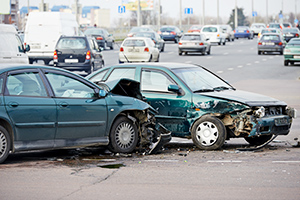
Read and find out if you travel through one of the top crash locations in Massachus
While drivers have a duty to operate with reasonable care and follow traffic laws, it is also worth noting the road you are traveling on. In Massachusetts, certain intersections have a track record of more car accidents than others.
Which intersections? In its most recent report, the Massachusetts Department of Transportation (MassDOT) shared the top 200 crash locations across the state. Released in September 2020, MassDOT’s 2017 Top Crash Locations Report offers insights as drivers plan their summer travel and resume commuting.
The rankings are based on reports to the Registry of Motor Vehicles’ Crash Data System from 2015-2017. A weighted methodology was used to compile the list.
Here are the top 10 car crash locations in Massachusetts:
- VFW Highway at Bridge Street, Lowell
- Randolph Avenue at Chickatwabut Road, Milton
- Morton Street at Harvard Street, Boston
- Ash Street and West Elm Street, Brockton
- Appleton Street at Central Street, Lowell
- Pleasant Street at Lincoln Street, Stoughton
- Main Street at Plainfield Street, Springfield
- High Street at Cabot Street, Holyoke
- Broadway at Third Street, Chelsea
- Saint James Avenue at Saint James Boulevard, Springfield
Several communities had multiple intersections on the list. Lowell has four of the top 25.
Top Crash Locations in Lowell
Two of the highest-ranked intersections were on the VFW Highway along the Merrimack River in Lowell. The VFW Highway at Bridge Street was named the top crash location statewide. The VFW Highway and Mammath Road ranked 22nd.
Also in Lowell, Appleton Street at Central Street and School Street at Branch Street appeared among the top 25 motor vehicle crash areas.
Brockton Top Crash Locations
MassDOT listed 31 Brockton intersections among the top 200 crash locations. The five top crash locations in Brockton:
4) Ash Street and West Elm Street, Brockton
15) Court Street at Montello Street, Brockton
23) Forest Avenue at Bouve Avenue, Brockton
24) Main Street at Nilsson Street, Brockton
25) Warren Avenue at Father Kenney Way, Brockton
One of the top crash locations was the area of North Quincy and Chestnut Streets on the Abington and Brockton border. Nearby, two Randolph intersections along Route 28 appeared on the list. At 41 was the intersection of South Main Street and Union Street. North Main Street and Scanlon Drive ranked 126 (this finished in the same position as six other intersections in Brockton, Lowell, Cambridge and two locations in Worcester).
Can You Change Your Commute to Avoid High Crash Locations?
Every driver wants to avoid a car crash. Apps such as Google Directions and Waze can offer valuable insights about traffic volumes. But we encourage you to look through the full MassDOT list of top crash locations.
If you travel through one of these intersections, consider why there are so many auto accidents. Some roads have high traffic volumes, especially during commuting hours. With more drivers, you may see more unsafe maneuvers, such as talking on a cell phone, speeding or failure to yield. Other roads have become large truck routes or are just aging, with outdated traffic infrastructure or poor lighting.
If you can, try to avoid these intersections or adjust your commute to avoid peak traffic. If you must travel these areas, pay attention and consider safety, near other vehicles as well as other pedestrians and cyclists. And watch for change. If you search online, you may find some of these intersections are scheduled for re-construction in the near future.
Free Legal Consultation – Contact Our Boston Car Accident Lawyers
Breakstone, White & Gluck offers our clients more than 100 years combined experience in handling car accidents, truck crashes and other motor vehicle collisions. Clients turn to us for our experience, expertise and our commitment to achieving the best result in every case. Read about our past results for clients in personal injury cases.
If you have been injured by another driver, learn your legal rights for seeking compensation. For a free legal consultation, contact our car accident attorneys at 800-379-1244 or 617-723-7676 or use our contact form.
Massachusetts Observes Motorcycle Safety Awareness Month With Caution As Fatal Crashes Rise

May is Motorcycle Safety Awareness Month. In Massachusetts, the message is critical as motorcycle fatalities are rising.
May is Motorcycle Safety Awareness Month and Massachusetts has to observe with more caution this year.
The number of fatal motorcycle crashes rose across the state last year. So did the number of fatal motor vehicle accidents, even as traffic volumes fell statewide with COVID-19. State officials say drivers were speeding down open roads and when accidents happened, they were more likely to be fatal.
Statewide, the number of motor vehicle fatalities increased more than 2 percent, from 336 deaths in 2019 to 345 deaths in 2020, according to MassDOT Crash Data as of May 10, 2021. While there were fewer pedestrian fatalities, the state saw a notable increase in both motorcycle and bike accident fatalities. Motorcycle fatalities increased 20 percent, from 48 fatalities in 2019 (including 46 motorcycle operators and 2 passengers) to 58 motorcycle fatalities last year (55 motorcyclists and 3 passengers). MassDOT also reported 10 fatal bicycle crashes last year, a 100 percent increase over 2019.
Because drivers traveled fewer miles last year, the traffic fatality rate climbed much more than the actual numbers across the country. At Breakstone, White & Gluck, we encourage drivers to refocus and work to travel safely near motorcyclists. We share these safety tips from the National Highway Traffic Safety Administration (NHTSA):
Motorcycle Safety Tips for Massachusetts Drivers
Motorcyclists Have the Same Rights. Drivers must share the road with motorcyclists. Motorcyclists have the right to travel in the traffic lane and even pass your vehicle, when it is safe to do so. They also have to obey the same traffic signs and signals. You can reduce the risk of causing a motorcycle accident by giving riders extra room and slowing down on your approach.
Recognize a Motorcycle’s Size. Appreciate the difference between a motorcycle and a motor vehicle. Motorcycles may weigh several hundred pounds. An SUV may weigh in at 5,000 to 6,000 pounds. Commercial vehicles carry many times this.
Use Your Mirrors and Look for Motorcyclists. Use your mirrors when you drive. Assume you will be sharing the road with motorcyclists, as well as cyclists and pedestrians.
Use Your Turn Signals. Activate your turn signal early enough so motorcyclists know you intend to turn.
Never Trust Motorcycle Blinkers. On the other hand, never trust a motorcyclist’s blinkers. Motorcycles may not have self-canceling turn signals. If a motorcyclist forgets to turn their signal off, it may continue blinking. When you approach an intersection and come up behind a motorcyclist, wait until you are certain of their plans to avoid causing a motorcycle turn collision.
Commit Not to Pick Up Your Cell Phone. By committing to this, you are in a better position to safely respond to motorcyclists and other traffic.
Safety Tips for Massachusetts Motorcyclists
If you are a motorcyclist, May is a good time to check in on safety fundamentals.
Check Your Helmet. The best way to protect yourself is to wear a motorcycle helmet. The NHTSA offers tips for choosing a motorcycle helmet.
Review Your Auto Insurance. Take a moment to review your auto insurance policy. Another driver may be responsible for your injuries. But the reality is many drivers operate illegally without auto insurance or only purchase the state’s minimum coverage requirements. It is important for you to consider this as you purchase auto insurance. Ask your auto insurance agent for help and read our article on optional auto insurance coverages for Massachusetts motorcyclists.
Sign Up for Motorcycle Training. The Registry of Motor Vehicles offers the Massachusetts Rider Education Program at motorcycle schools across the state. Training classes are designed for all skill levels. At training classes, you have the opportunity to learn and sharpen your skills. You may also qualify for a discount on your auto insurance, savings you can use to buy more coverage.
What to Do If You Are Injured in A Motorcycle Crash
When a driver hits a motorcyclist, victims usually suffer serious and life-threatening injuries. At Breakstone, White & Gluck, we understand a motorcycle crash is devastating and emotional. The motorcyclist, along with their family members, needs guidance from an experienced motorcycle accident lawyer. We have the experience you need at Breakstone, White & Gluck. Read about our past results for clients in motorcycle accident cases.
Contact Breakstone, White & Gluck for a free legal consultation to learn your rights. Our attorneys will review the facts of your case with you and explain if you have a potential claim against another driver. If you have been injured by a commercial truck, it is even more important to contact an experienced lawyer to oversee the full investigation from the start.
For a free legal consultation, contact our Boston motorcycle accident lawyers at 800-379-1244 or 617-723-7676. You can also use our contact form.
Massachusetts Cyclists May Finally Get Three Feet for Safety
 Cyclists may get a little more room for safety if lawmakers pass the road safety legislation Gov. Charlie Baker proposed this week.
Cyclists may get a little more room for safety if lawmakers pass the road safety legislation Gov. Charlie Baker proposed this week.
On Monday, the Baker-Polito administration filed an expansive road safety package, which among other changes, calls for a new primary seat belt law and a controversial measure allowing cities and towns to install red-light cameras.
One proposal – to be called Haley’s Law – seeks much steeper penalties for drivers who operate with a suspended license. Currently, drivers may face fines and/or up to 10 days in jail for the first offense in Massachusetts per M.G.L. c. 90, § 23.
With the new legislation, a driver who lets their license lapse, then drives could face up to $1,000 in fines and 5 years in prison for the first offense. Drivers who cause auto crashes resulting in serious injury could face up to 2 ½ years in a House of Correction. There would be a mandatory two-year sentence, and up to 10 years imprisonment, for drivers convicted in fatal crashes.
The legislation is called, “An Act Relative to Improving Safety on the Roads in the Commonwealth,” and was filed as Massachusetts re-opens after COVID-19. The pandemic changed everything on our roads. But despite lighter traffic, our roads were not safer last year.
According to state figures, Massachusetts saw 334 traffic fatalities during 2020, compared to 336 in 2019.
Safety Reforms for Massachusetts Cyclists
For cyclists, there are two significant proposals: a 3-foot safe passing distance and a truck sideguard mandate for all state-owned and operated trucks.
3-Foot Safe Passing Distance
When traveling near cyclists, the legislation would require drivers to maintain a three-foot safe passing distance and a safe and proper speed. Drivers would have the same responsibility near cyclists traveling without a protective barrier, such as a protected bike lane with flex posts. 36 other states have safe passing laws, according to the Baker-Polito administration. The proposed legislation would give both drivers and future road projects more direction on how to accommodate cyclists. Massachusetts lawmakers have not acted on similar legislation in previous sessions.
Most drivers know they must stay at least three feet away as a precaution to avoid bicycle crashes. But currently, Massachusetts traffic laws only recognize that drivers must pass cyclists at a “safe distance.” There is no consistent message on how much room to give cyclists.
Massachusetts traffic laws currently state in, “approaching or passing a person on a bicycle the operator of a motor vehicle shall slow down and pass at a safe distance and at a reasonable and proper speed.” M.G.L. c. 90 § 14. Drivers must “wait for a safe opportunity to overtake” a bicyclist or other vehicle, per M.G.L. c. 89 § 2.
Stronger Truck Safety Equipment Requirements
The Baker-Polito administration is calling for state-owned and operated trucks to utilize safety equipment such as sideguards, convex mirrors and cross-over mirrors. All these state vehicles weighing over 10,000 pounds would have to comply by Jan. 1, 2024.
The goal is to reduce the risk of injury and death to pedestrians and cyclists, the most likely victims in truck crashes, according to the Volpe National Transportation Center.
In Boston, we have seen numerous cyclists killed when truck drivers and companies are neglect to look. In 2014, the Boston City Council took strong action, passing the first-in-the-nation truck sideguard ordinance. All city-owned and city-contracted trucks must now be equipped with sideguards, convex mirrors, crossover mirrors and blind-spot awareness decals.
Today, as you drive through Boston, you will see large trucks with sideguards. But Boston – and Somerville and Cambridge have similar regulations – can only influence safety within the city. This is why many – including Breakstone, White & Gluck – support passing statewide legislation requiring sideguards protect cyclists and pedestrians from being swept under trucks. While this proposal would only impact state-owned and operated trucks, this could protect many cyclists and potentially encourage private industry.
Support Truck Sideguards in Massachusetts
MassBike is advocating for the passage of “An Act Relative to Improving Safety on the Roads in the Commonwealth,” which will protect cyclists on Massachusetts roads. If you support the organization’s work, visit the MassBike website and learn how to contact your local legislators and voice your support.
As Wrong-Way Crashes Rise, Drunk Driving is the Leading Cause, But a Driver’s Age and Driving Alone May Also Contribute
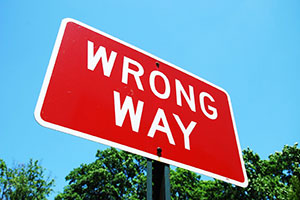
Wrong-way crashes are on a dangerous rise in Massachusetts and across the U.S., according to the AAA Foundation for Traffic Safety.
No one ever wants to hear the phrase “wrong-way crash.” But head-on collisions are frequent and often fatal on Massachusetts highways.
A new traffic analysis reveals the number of wrong-way crashes is rising on divided highways across the U.S. The majority of these auto crashes involve an alcohol-impaired operator. Drivers are exceeding the legal limit in 6 of 10 wrong-way car crashes, according to the AAA Foundation for Traffic Safety.
Drunk driving is the leading cause. Yet researchers say other factors, including a driver’s age and driving without a passenger, contribute. For example, 87 percent of wrong-way drivers travel alone. Passengers can be a resource for drivers, giving them an extra set of eyes to catch potential mistakes.
As for older drivers, those between 75 and 79 drive fewer miles and spend less time driving than younger operators. Still, they are more likely to be involved in a wrong-way crash and states are being urged to review how they identify medically at-risk drivers.
How Many Wrong-Way Crashes Are There in Massachusetts Each Year?
In Massachusetts, MassDOT data shows 150 people have died and more than 4,500 have been injured in wrong-way car accidents since 2010, according to CBSBoston.com. Since 2010, there have been 8,200 wrong-way crashes.
Nationwide, wrong-way accidents caused an average of approximately 500 deaths per year from 2015 – 2018, according to AAA. This represents a 34 percent increase from 2010 – 2014.
According to the CBSBoston.com report, the numbers also climbed in Massachusetts, from 19 to 27 deaths on average annually for the same period, a 78 percent increase.
Worcester recorded 366 wrong-way crashes, more than any other community in Massachusetts, followed by Springfield and Boston.
Wrong-Way Crashes Can Also Happen at Local Intersections
The AAA report focuses on wrong-way crashes on divided highways. Drivers can also make dangerous maneuvers resulting in wrong-way accidents at local intersections. From 2015-2018, the Federal Highway Administration reported roughly 400-450 wrong-way crashes at intersections.
Crashes may not be reported the same way at intersections, which have different traffic conditions, speeds and signage. When there is a wrong-way crash, the driver may be cited for another infraction, such as a marked lanes violation or failure to stop for a traffic signal.
But if you have been seriously injured at an intersection with a “Do Not Enter-Wrong Way” sign, it is in your best interest to consult an experienced car accident attorney who can thoroughly investigate the cause of a collision and your injury. An attorney can help you secure evidence promptly and with every aspect of your claim should you need to seek compensation from an at-fault driver’s insurance policy.
Strengthening Traffic Laws to Reduce Wrong-Way Crashes
The AAA Foundation for Traffic Safety and the National Transportation Safety Board are working to educate drivers about taking safety precautions to avoid wrong-way crashes and head-on traffic crashes. The most fundamental step is not to drink and drive.
The organizations also support passage of safety laws and infrastructure improvements, including more visible traffic signs.
Ignition-interlock laws are part of this effort and all eyes are on Massachusetts. We are the only state which does not require drivers with a first-time OUI conviction to utilize ignition interlocks, which test one’s blood alcohol concentration before they start driving.
However, after years of unsuccessful debate, Massachusetts may finally be moving closer. Last December, Gov. Charlie Baker signed an amendment to the state budget which if passed, will make ignition interlocks mandatory for all drivers convicted of operating under the influence. This could make a meaningful difference in discouraging choices that lead to drunk driving crashes and very serious injuries across Massachusetts.
Tips for Driving Safely on Highways
Do Not Drink and Drive. Never consume alcohol – or marijuana or other drugs – then drive. Use the designated driver system if you plan to go out and consume alcohol. Drivers have the same responsibility when using prescription medications which carry safety warnings about driving. If you have a question, consult your doctor on when and how you should use your medication.
Stay Alert. Do not drive if you are drowsy or fatigued. If you find yourself too tired to drive, stop your vehicle and come up with a short-term plan for getting some rest or grabbing a cup of coffee. There is always an alternative, including Uber or Lyft. Drivers often want just to push through and reach their destination. But if your vision is blurry or you cannot focus, you are driving negligently and putting others in harm’s way.
Drive with a Friend. You can split up the driving responsibilities, which will reduce your fatigue.
Avoid Distracted Driving. Reaching for a cell phone is the cause of many auto accidents. You are not using reasonable care to drive safely if you attempt to make a phone call while traveling through highway traffic, among other cars, SUVs and large trucks.
While Massachusetts has a hands-free driving law and drivers are legally allowed to make phone calls with Bluetooth devices, the safest approach is to still look for a rest stop or exit and safely park your vehicle before using your phone.
Create a Family Support System. Families can support each other in getting home safely. Try to develop a network of friends and loved ones who will support you. Ask them in advance if they would be willing to come pick you up if you ever needed a ride. Be willing to do the same for them.
Help Older Drivers Plan. Be proactive. Take time to discuss transportation options with the older driver in your life. If they drive, help them plan the best times of day to travel and steer them away from the highway. Remind them the importance of having a regular eye exam.
Let them know they have support. Make a schedule for your loved one to get out several times a week with you, other family members, grandchildren or a Council on Aging.
Free Legal Consultation – Call Our Boston Auto Accident Lawyers
With more than 100 years combined experience, Breakstone, White & Gluck specializes in representing those who have suffered serious personal injury or wrongful death due to negligence. We are based at 2 Central Plaza in downtown Boston.
With expertise in Massachusetts insurance laws and traffic accident investigations, our attorneys are here to guide clients through the difficulties you face after a serious accident. For a free legal consultation, contact Breakstone, White & Gluck and our car accident lawyers at 800-379-1244 or 617-723-7676 or use our contact form.
Sharp Rise in Pedestrian Fatality Rate During the First Half of 2020, Despite COVID-19 Restrictions
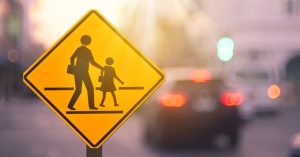 Less traffic did not mean fewer pedestrian accidents in the early months of the pandemic. In fact, preliminary traffic data shows there was roughly the same number of fatal pedestrian accidents in the first half of 2020 compared to the same period of 2019.
Less traffic did not mean fewer pedestrian accidents in the early months of the pandemic. In fact, preliminary traffic data shows there was roughly the same number of fatal pedestrian accidents in the first half of 2020 compared to the same period of 2019.
However, because there were fewer cars out, the Governor’s Highway Safety Association (GHSA) is actually projecting a 20 percent increase in the pedestrian fatality rate per one billion miles traveled, according to the report, “Pedestrian Traffic Fatalities by State: 2020 Preliminary Data.”
According to the data analysis, 2,957 pedestrians were killed in motor vehicle crashes during the first half of 2020. This is 6 more pedestrians than the same period of 2019, when the calculation included more vehicles on the road.
If trends continue, 2020 could end up having a record rate of fatal pedestrian accidents, despite having fewer cars on the road.
How much less traffic? The Federal Highway Work Administration reported a 16.5 percent decrease in traffic on all roads and streets in 2020. Here in Massachusetts, MassDOT reported an immediate 50 percent reduction in traffic volumes in April 2020. Massachusetts traffic volumes were still 20 percent lower than normal in September 2020, according to our past blog on COVID-19 traffic conditions in Massachusetts.
Larger Trend of Pedestrian Fatalities
For years, pedestrian fatalities have been on a dangerous rise in the U.S. Prior to COVID-19, pedestrian traffic fatalities stood at the highest levels since 1990. There was a striking 46 percent increase in these accidents from 2010 to 2019, according to the GHSA. In 2019, pedestrian traffic fatalities accounted for roughly 17 percent of all traffic deaths.
How Many Pedestrian Fatalities Occurred in Massachusetts During COVID-19 in 2020?
In preliminary data, Massachusetts reported 17 pedestrian fatalities in the first half of 2020, compared to 32 from January to June 2019.
Massachusetts was one of 20 states, along with Washington D.C., which reported a decrease in the actual number of pedestrians who were killed in car accidents or crashes involving trucks, SUVs and other vehicles.
In 27 other states, the number of pedestrian fatalities in car accidents and truck crashes increased.
Notably, more than half of all pedestrian fatalities happened in seven of the most populous states, including Arizona, California, Florida, Georgia, New York, North Carolina and Texas.
Contributing Factors in the Rising Number of Pedestrian Fatalities
The GHSA cited several trends in these fatalities, including drivers who sped down open roads simply because there was less traffic.
Distraction and fatigue also contributed to many pedestrian crashes, including when drivers were negligent and failed to stop at an intersection or stay within the marked lane. In Massachusetts, the new hands-free cell phone law took effect in April 2020 but the impact was effectively delayed by Covid-19.
In addition, the report touched on the trend of drivers choosing light trucks and SUVs more often. In 2019, sales of light trucks and SUVs far outpaced passenger vehicles. The larger vehicles accounted for 72 percent of all auto sales.
Pedestrians are still more likely to be injured by a driver in a passenger car. However, over the past 10 years, there has been a 69 percent increase in SUV accidents resulting in pedestrian fatalities.
With larger frames, SUVs have a unique front-end design which is particularly threatening to pedestrians. In a pedestrian SUV crash, the grill can strike a pedestrian’s pelvis or chest at nearly the same time the vehicle’s bumper hits the lower extremities, increasing the force of the impact.
Free Legal Consultation – Boston Pedestrian Accident Attorneys
At Breakstone, White & Gluck, our pedestrian accident lawyers are committed to fighting for the rights of those injured or killed by a driver’s negligence or wrongdoing. We have represented clients after pedestrian accidents in Boston, Cambridge and throughout Massachusetts. Our attorneys have recovered significant awards, including:
- $7.1 million for our client was who hit by an MBTA bus in a South Boston crosswalk
- $2.15 million for the estate of our client who was hit and killed in a parking lot, which was not equipped with pedestrian safety bollards
- $1.375 million for our client who was hit by a speeding MBTA bus in Roxbury
If you or a family member has been injured in a pedestrian crash, learn your legal rights. For a free legal consultation, contact Breakstone, White & Gluck at 800-379-1244 or 617-723-7676 or use our contact form.
Breakstone, White & Gluck Donates Bicycle Helmets for a Special Brockton Police Safety Event
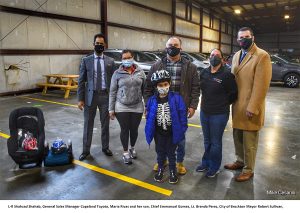 Breakstone, White & Gluck was so pleased to support a family event hosted by the Brockton Police Department and other community partners this past weekend. This was a special event because Brockton Police gave away both free car seats and bicycle helmets to local children and families. The goal was to prevent injuries. Many families struggle to get started with car seats and bicycle helmets and end up using them improperly.
Breakstone, White & Gluck was so pleased to support a family event hosted by the Brockton Police Department and other community partners this past weekend. This was a special event because Brockton Police gave away both free car seats and bicycle helmets to local children and families. The goal was to prevent injuries. Many families struggle to get started with car seats and bicycle helmets and end up using them improperly.
The Brockton Police Department partnered with Copeland Toyota and Buckle Up for Life to give families free car seats. Brockton Police has four officers who are certified child passenger safety technicians. They can speak English, Spanish, Cape Verdean Creole and Hatian Creole. Especially after the pandemic, this event was a good opportunity for parents and caregivers to receive a free car seat, have it installed by a police officer and ask questions.
Breakstone, White & Gluck donated the children’s bicycle helmets from our Project KidSafe campaign. Brockton Police helped the children fit their new helmets.
Photo: From left to right, Shahzad Shahab, general manager of Copeland Toyota, then Maria Rivas and her son wearing a Project KidSafe helmet. Center is Brockton Police Chief Emmaneul Gomes, then Lt. Brenda Perez and Brockton Mayor Robert Sullivan on the right.


